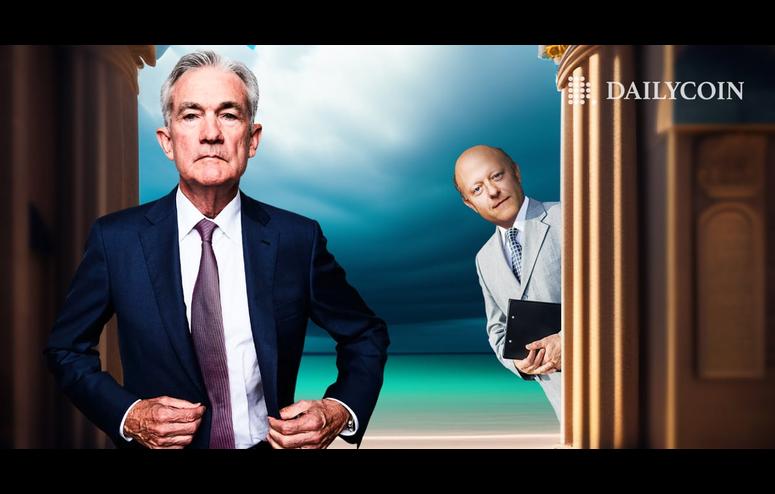Circle Pushes for Fed USDC Support Following SVB Collapse
TL;DR In the wake of Silicon Valley Bank’s collapse, Circle has been advocating for full reserve backing and regulatory guidelines for its USDC stablecoin. The company proposes that retail stablecoins should be backed by U.S. dollars held at the Federal Reserve, with regular audits and capital requirements imposed by the central bank. This would increase investor confidence and security in digital assets.

Circle has been calling for regulation and full reserve backing of its USDC stablecoin in the wake of Silicon Valley Bank’s collapse.
Circle’s proposed model would provide retail stablecoins access to risk-free cash, potentially increasing investors’ confidence and security in digital assets.
In the wake of the recent collapse of Silicon Valley Bank (SVB), the cryptocurrency industry has once again been grappling with issues of stability and regulation. In consideration of this, Circle, the issuer of the popular USDC stablecoin, emphasized the importance of maintaining full reserve backing and adhering to regulatory guidelines at the recent Gillmore Centre Conference.
The Boston-based firm has been pushing for regulations that would allow it to become a fully-reserved and federally-supervised institution and proposed that stablecoin issuers should hold their reserves with the Federal Reserve.
During the conference, Circle outlined its belief that holding dollar reserves with the Fed would be a logical step given SVB’s failure and underlined that a wholesale central bank digital currency held by the U.S. Federal Reserve could be a long-term option for retail stablecoins.
Circle provides a monthly update on the reserves it holds to ensure investor confidence and security and has been advocating for more stablecoin regulations. The company’s USDC stablecoin is backed by U.S. dollars on a one-to-one basis, with 80% U.S. Treasury bills and 20% cash.
Circle believes that digital currencies should hold full reserves through high-quality liquid assets and be prudently regulated and supervised by federal or national regulators at the central bank level.
In addition, Circle has also proposed that digital currency issuers should have direct access to accounts at the central bank. This would allow for greater transparency and accountability in managing digital currencies. This was a highly debated topic at the conference, with many people expressing their ideas for the sector.
Central Banks and Stablecoin Providers Working Closer Together
At the Gillmore Centre for Financial Technology conference, Ganesh Viswanath Natraj, Assistant Professor of Finance, supported the idea of central banks and stablecoin providers working closer together.
The Professor suggested that if stablecoins were to be backed by digital pounds or dollars held entirely by a central bank, the central bank could regularly audit stablecoin providers’ reserves and impose capital requirements. The central bank would thus be enabled to provide insurance for customers, thereby reducing the risk of a run on the stablecoin.
The Gillmore Centre for Financial Technology Conference covered various topics, including DeFi and centralized finance, crypto derivatives, and the growing metaverse industry. Additionally, the talks addressed issues related to fraud and scams in the crypto industry and research on DeFi liquidations.
On the Flipside
While the use of stablecoins and digital currencies is growing, their adoption and integration into traditional financial systems and institutions remain a complex and ongoing process.
The collapse of Silicon Valley Bank, which Circle survived by moving its cash out of the bank, highlights the risks associated with relying on financial partners to hold reserves.
Why You Should Care
Circle’s call for the U.S. Federal Reserve to back its USDC stablecoin with its U.S. dollars held at the Fed highlights the need for stablecoin regulation and supervision. The collapse of Silicon Valley Bank further emphasizes Circle’s long-standing advocacy for a full reserve federally supervised institution.
Circle’s proposed model, if implemented, seeks to provide retail stablecoins with access to risk-free cash and increase investor confidence and security in digital assets.
Circle’s CEO has recently challenged the SEC’s recent crackdown on stablecoins. Read more about it here:Circle CEO Allaire Challenges SEC’s Stablecoin Crackdown
Bitcoin and Ethereum have both reached nine-month highs in the latest surge for the top cryptocurrencies. Read about the factors driving this trend in this article:Bitcoin Breaks $28K as Ethereum Eyes $2K Amid Banking Crisis
